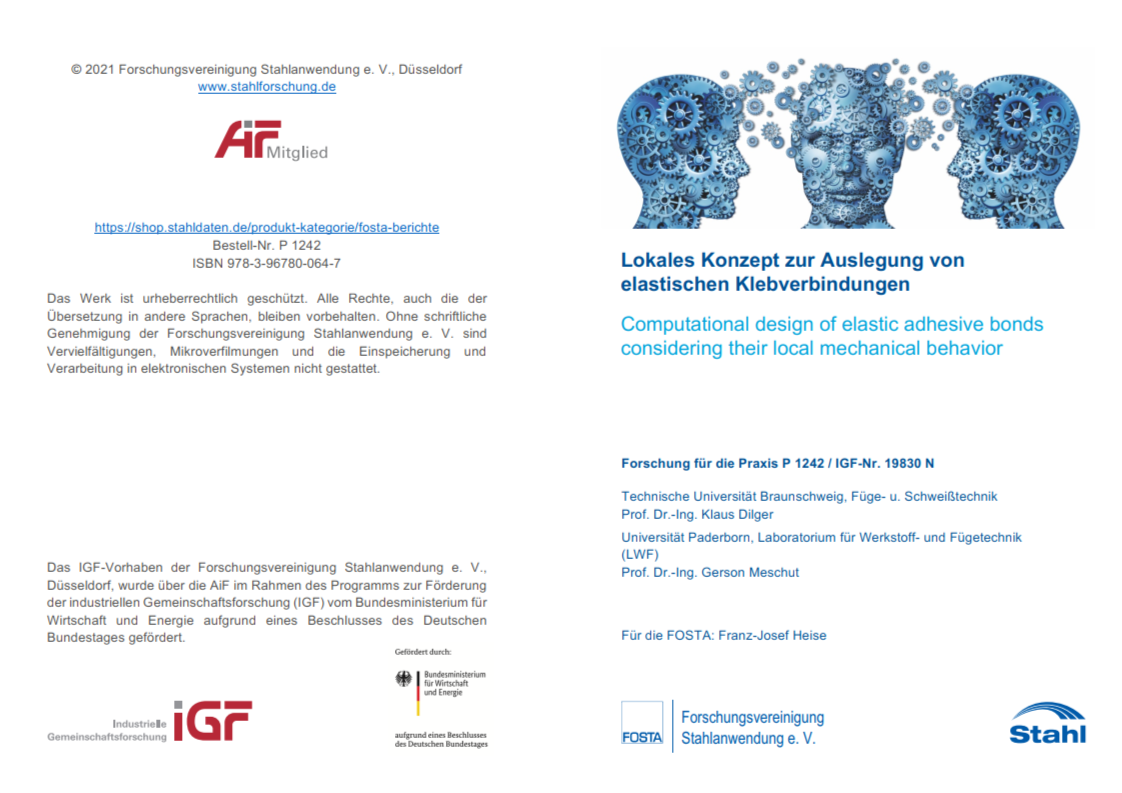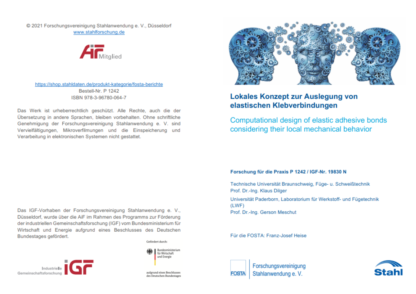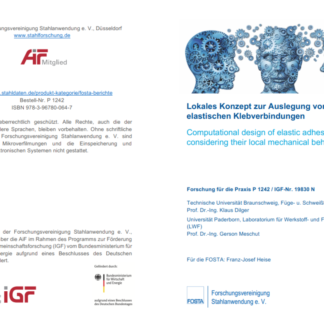Description
P 1242 – Computational design of elastic adhesive bonds considering their local mechanical behavior
Within the scope of the present research project, a method for direct high-resolution deformation measurement in adhesive layers was developed, which supports the classification of existing possibilities for the dimensioning of bonded joints as well as the possibility of opening up new ones. At the Institute for Joining and Welding Technology of the Technical University of Braunschweig (ifs), the novel method based on in-situ computed tomography was used or further developed in such a way that measurements can be carried out on various bondings under different mechanical loads. At the same time, the Laboratory for Materials and Joining Technology at the University of Paderborn (LWF) carried out the modeling and verification of the measurement method.
Tensile tests with stepwise increasing load were implemented in coordination between the involved research institutes on adhesive bulk specimens and inhomogeneously stressed specimen geometries in the form of single overlapped tensile shear and butt joint tensile specimens. In-situ computed tomography measurements and measurements by means of gray value correlation, respectively, for selected load levels were carried out after relaxation had ceased. From the detected movements of the particles, three-dimensional displacement fields corresponding to the respective load level could be calculated by means of a suitable evaluation algorithm. A comparison of the displacements measured at the surface by means of gray value correlation and the three-dimensional displacement fields calculated from in-situ computed tomography measurements served to verify the generated FE models. As a suitable simulation model, the MARLOW model provided the best matches for the numerical mapping. The parameterization was carried out with the characteristic values of longitudinal strain, transverse strain and the transverse contraction number determined from tensile tests. The parameter sets and simulation models determined and validated by the research institutions for the analysis of bonded joints can be used directly by SMEs, such as manufacturers of software for the calculation of bonded joints. In general, the confidence in adhesive bonding technology is strengthened by the deeper understanding of adhesive behavior under specific actions and improved design methods through simulation, which strengthens the companies active in this field of technology.
Published in:
2021
Authors:
Prof. Dr.-Ing. K. Dilger, Prof. Dr.-Ing. G. Meschut




